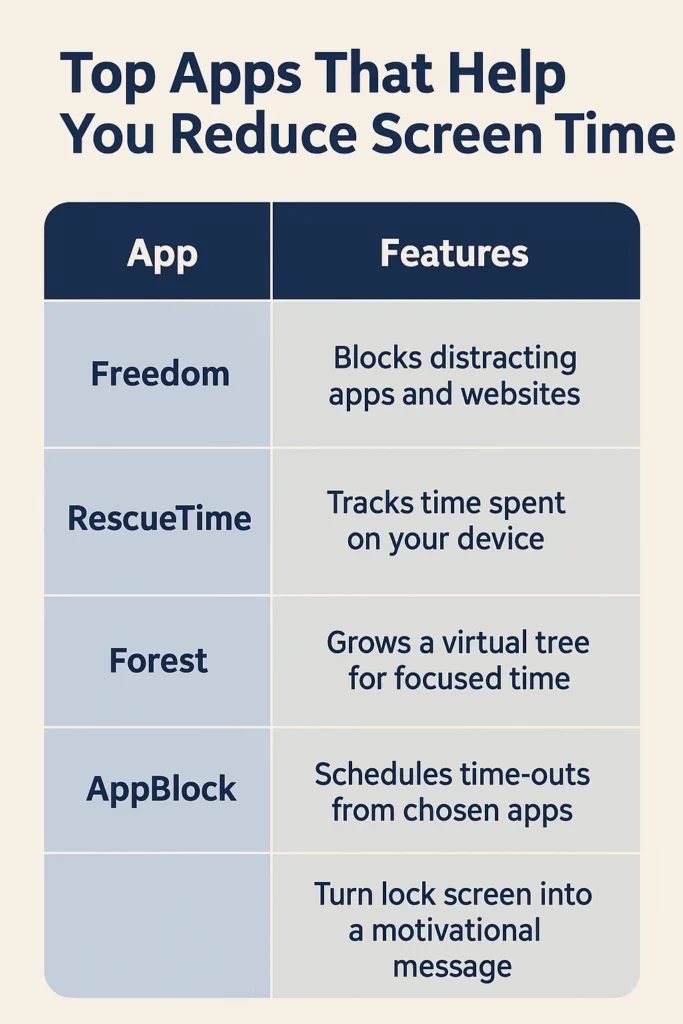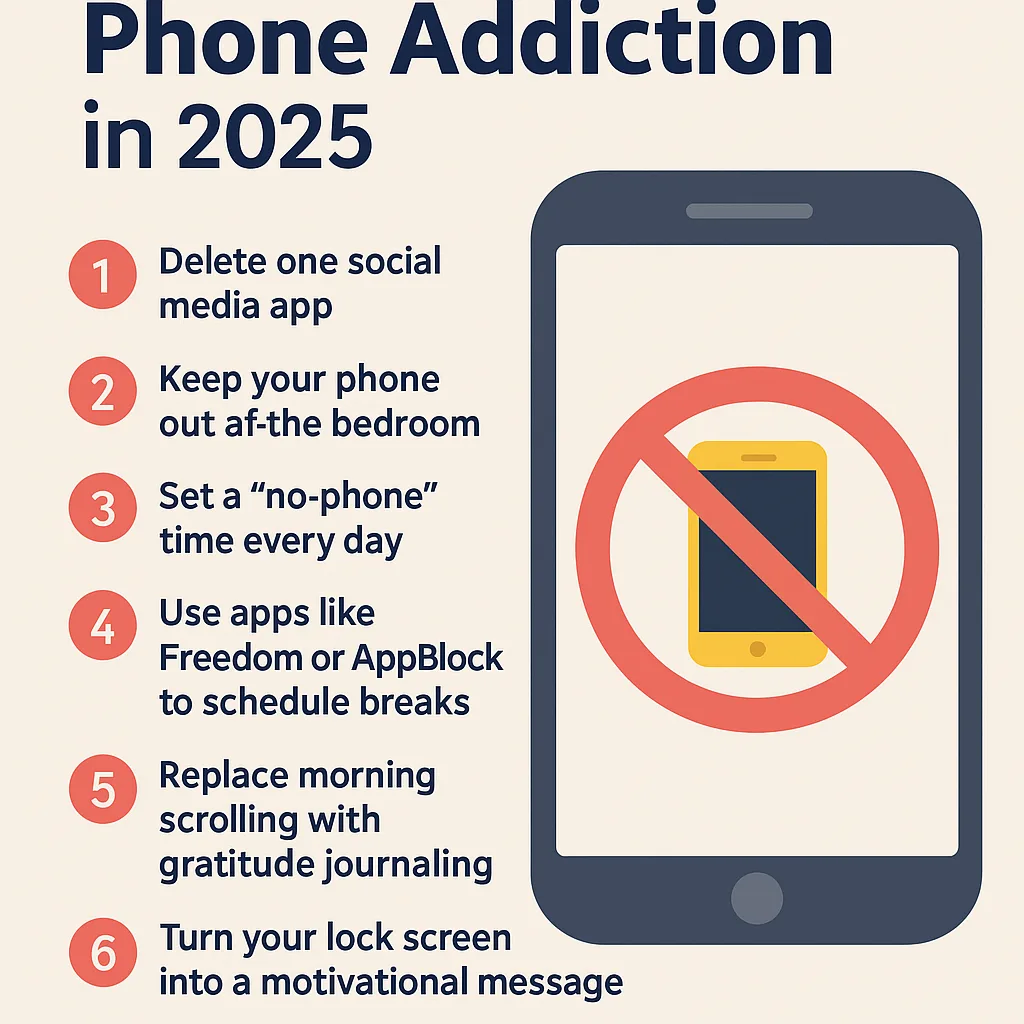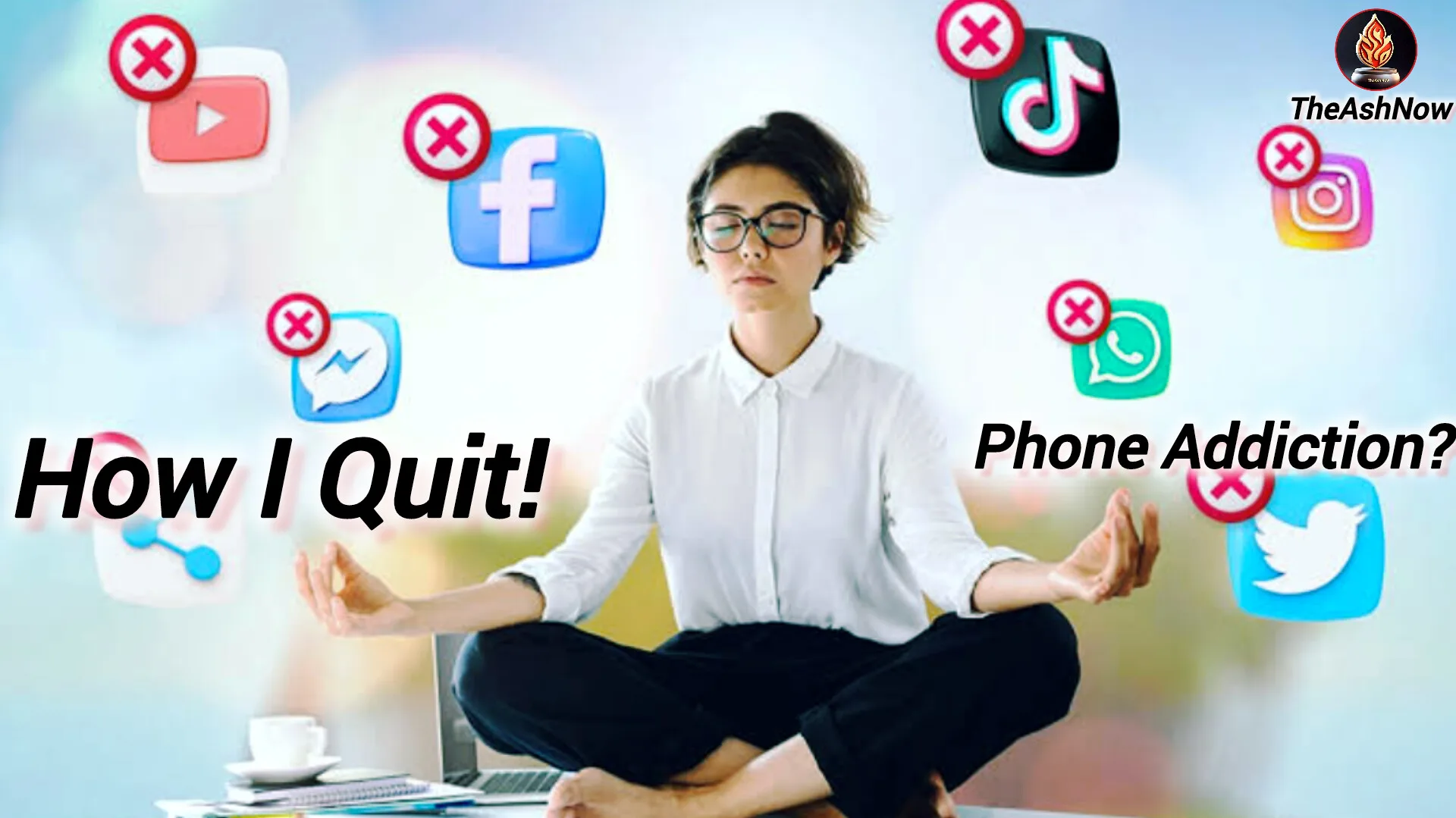“It started with just one more scroll…”
We don’t realize how it begins.
A notification buzz.
An Instagram reel.
A quick check that becomes a rabbit hole.
I didn’t think I was addicted. I mean, everyone uses their phones, right? But slowly, I started feeling foggy, anxious, and disconnected—even when I was “connected” 24/7. If this sounds familiar, you’re not alone. And the good news? You can absolutely reclaim your time, focus, and joy.
In this blog, I’ll walk you through how I quit my phone addiction—step by step—with practical strategies, emotional breakthroughs, and tools that actually work in 2025. This isn’t just about ditching your phone. It’s about getting your life back.
Table of Contents

📱 Is Phone Addiction a Real Problem?
Let’s be real: phones are designed to be addictive.
Big tech companies pour billions into making apps irresistible. Every notification, color, and sound is engineered to trigger your dopamine system—the same system that lights up with gambling, sugar, or drugs.
🧠 Real Stats That Might Shock You:
- The average American spends 4 hours and 30 minutes a day on their phone (Statista, 2024).
- 61% of people say they feel anxious when they don’t have their phone with them (Reviews.org).
- Gen Z unlocks their phones over 80 times a day on average.
- Social media platforms are designed to exploit your attention and keep you hooked.
“Technology is a great servant, but a terrible master.” – Stephen Covey
🚩 My Breaking Point: The Moment I Knew Something Had to Change
I remember lying in bed at 2:13 AM, scrolling endlessly, heart racing for no reason, feeling emptier with every swipe. I had deadlines, dreams, and a life waiting… but I couldn’t stop.
The worst part? I was missing real moments—with family, friends, and even myself.
That’s when I whispered: “This can’t be my life.”
And that’s where the journey back began.
🛠️ Step-by-Step: How I Quit My Phone Addiction
Here’s exactly what worked for me. No judgment, no gimmicks—just real steps.
1. Face the Truth (Without Shame)
Before fixing anything, I had to get honest with myself.
- I tracked my screen time (Apple Screen Time / Digital Wellbeing on Android).
- I wrote down how I felt after long phone sessions.
- I realized I was using my phone to escape—boredom, stress, loneliness.
2. Create Friction Between You and Your Phone
Addiction thrives on ease. So I made it harder to mindlessly scroll:
- Turned on grayscale mode (no more colorful dopamine traps).
- Moved distracting apps off the home screen.
- Logged out of social media after each use.
- Switched to a dumb phone during weekends (it was weirdly freeing!).
3. Set “Tech-Free Zones” and “Sacred Times”
Just like you don’t bring junk food to the gym, I stopped bringing my phone into:
- The bedroom
- The dinner table
- My morning routine (no phone for the first hour of the day)
This small boundary had a massive impact on my mental clarity.
4. Replaced the Habit (Don’t Just Remove It)
Quitting something without replacing it is a recipe for relapse.
So I started:
- Journaling in the morning
- Reading 10 pages before bed
- Taking 15-minute walks after work
- Calling friends instead of texting
And yes, I got bored sometimes. But slowly, boredom became peaceful. Creative. Human.
5. Use Tools That Fight FOR You (Not Against You)
Some apps actually helped:
- Freedom – Blocks distracting apps/sites
- Forest – Grow a virtual tree by staying off your phone
- One Sec – Adds a breathing pause before launching social apps
- Focus Mode (built-in) – Disables access during working hours

💡 What Happened After I Quit
This wasn’t an overnight transformation. But over a few weeks:
- I started sleeping better.
- My brain felt clearer—less foggy, more creative.
- I was less anxious, more patient.
- My relationships improved—I was more present, more “me.”
And most importantly? I remembered what living feels like.
“Almost everything will work again if you unplug it for a few minutes… including you.” —Anne Lamott
Common Questions: “But What If…”
What if I need my phone for work?
Totally fair. Don’t quit your phone—curate it. Remove what’s toxic, keep what’s useful.
What if I relapse?
That’s normal. The goal isn’t perfection—it’s awareness. Just restart. No guilt.
What if I feel lonely without it?
That loneliness? It’s an invitation to reconnect—with real people, nature, your own thoughts.
🌟 7 Practical Tips for Quitting Phone Addiction in 2025
- Delete one social media app for a week—see how it feels
- Keep your phone out of the bedroom (buy a cheap alarm clock)
- Set a “no-phone” time every day (even 30 minutes counts)
- Use apps like Freedom or AppBlock to schedule breaks
- Replace morning scrolling with gratitude journaling
- Turn your lock screen into a motivational message
- Get accountability—tell a friend or partner about your goal
💥 The Bigger Picture: This Isn’t Just About Phones
This is about your mind. Your time. Your life.
It’s about waking up from autopilot and choosing presence over pixels.
And the best part?
You don’t need to go cold turkey. You just need to start—one intentional decision at a time.
✅ Final Thoughts: Reclaim Your Life Today
If you’re still reading, chances are… you’re ready.
Not for a digital detox, but for a life recharged with purpose, presence, and power.
Your phone will always be there.
But this moment? This life—it won’t.
So, how can you take the first step in 2025?
Start small. Stay kind to yourself. And remember: the life you want is already waiting. 🌱
🔔 Action
Ready to quit phone addiction and feel more alive in 2025?
Here’s your challenge:
Turn off your phone for 1 hour today and do something you’ve meant to—walk, call, write, breathe. Then tell us how it felt in the comments below or tag us @TheAshNowBlog.
👉 Need a guide?
You Can Visit My Digital Detox Series.






Yess I loved it
hi